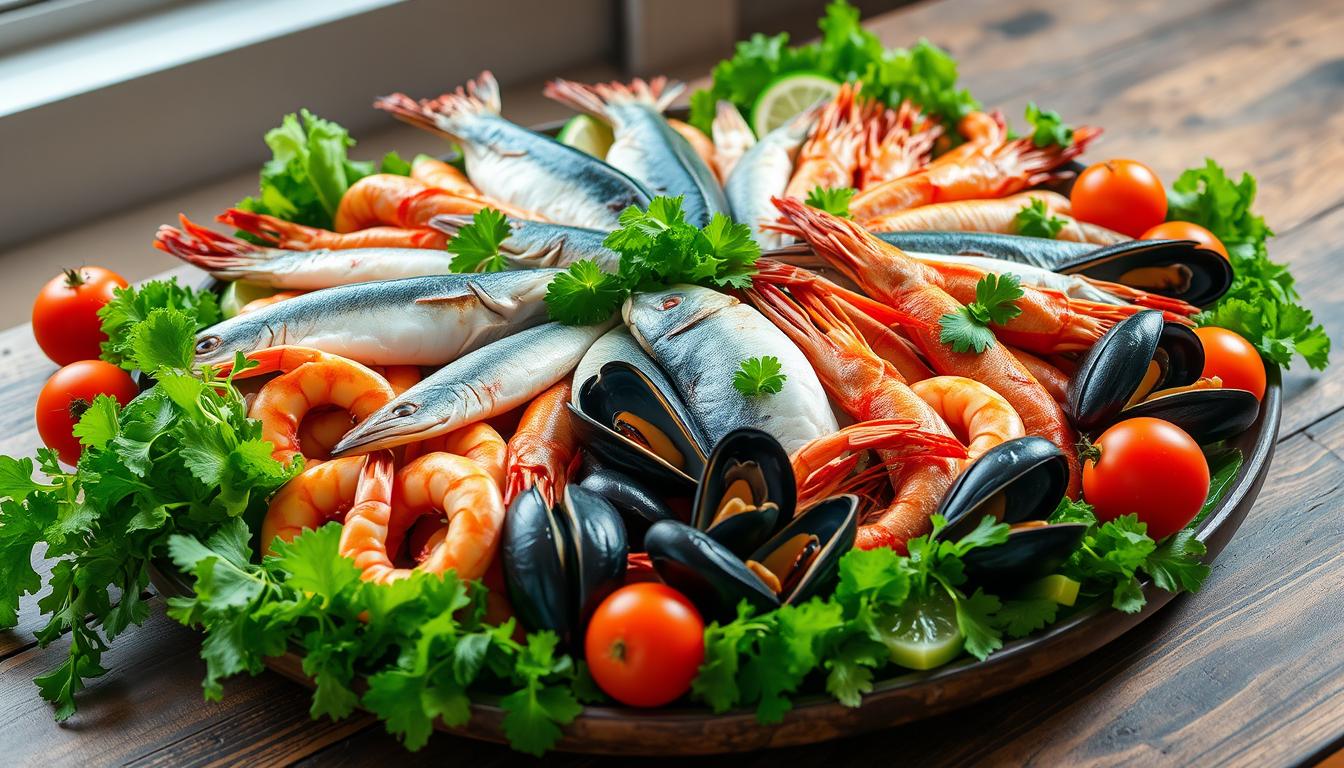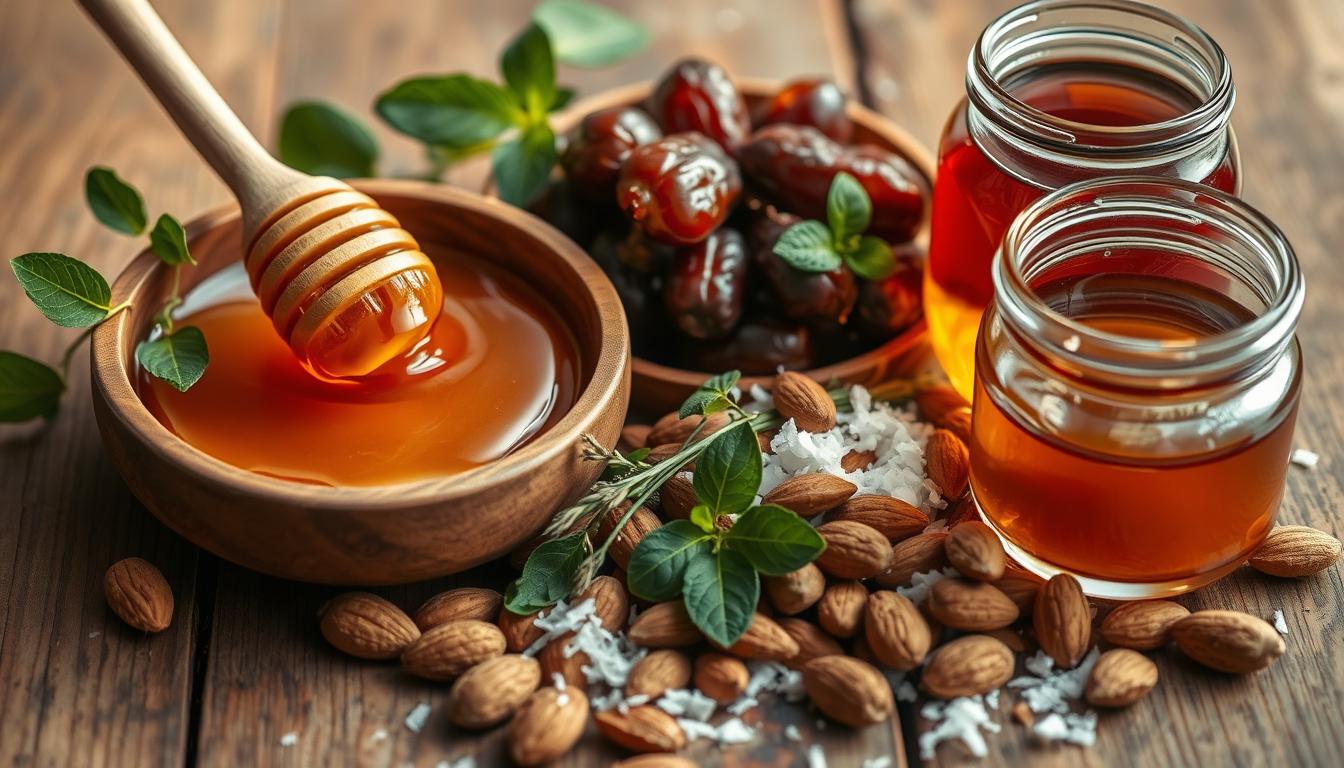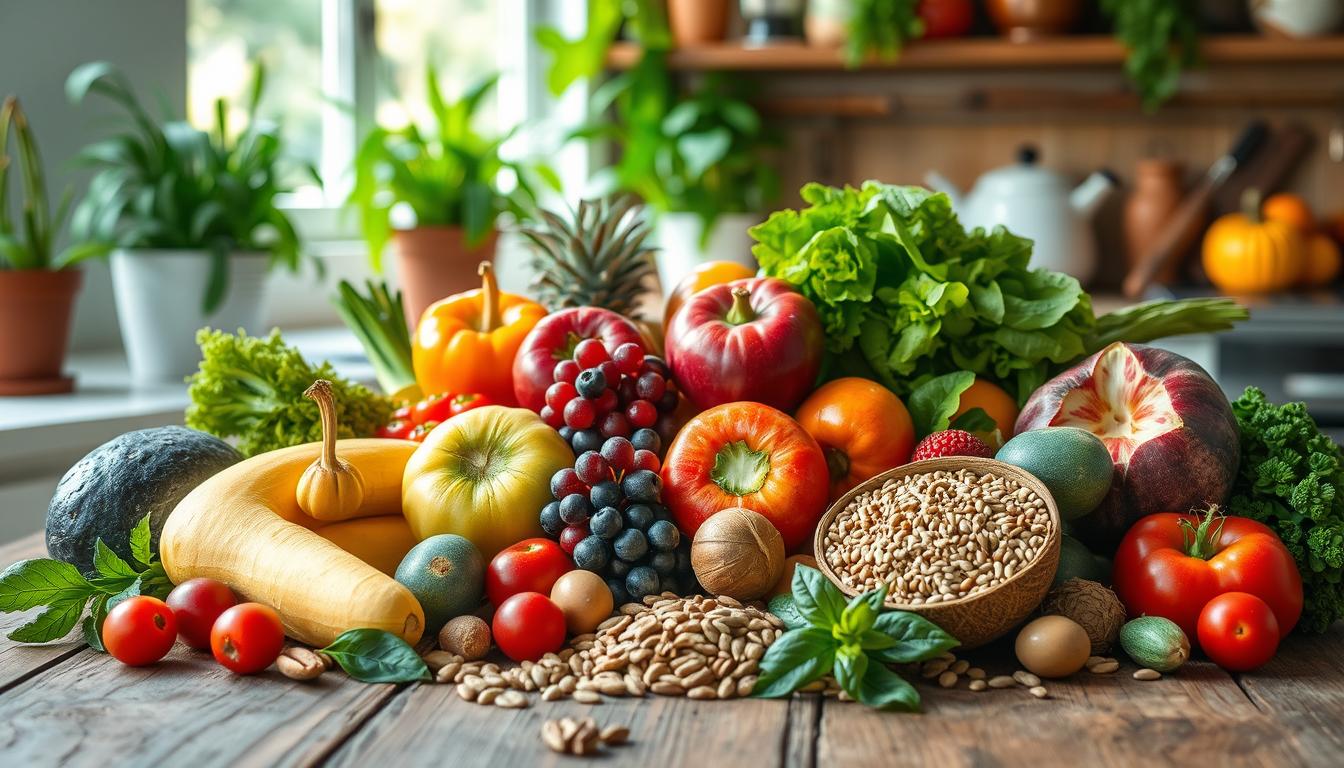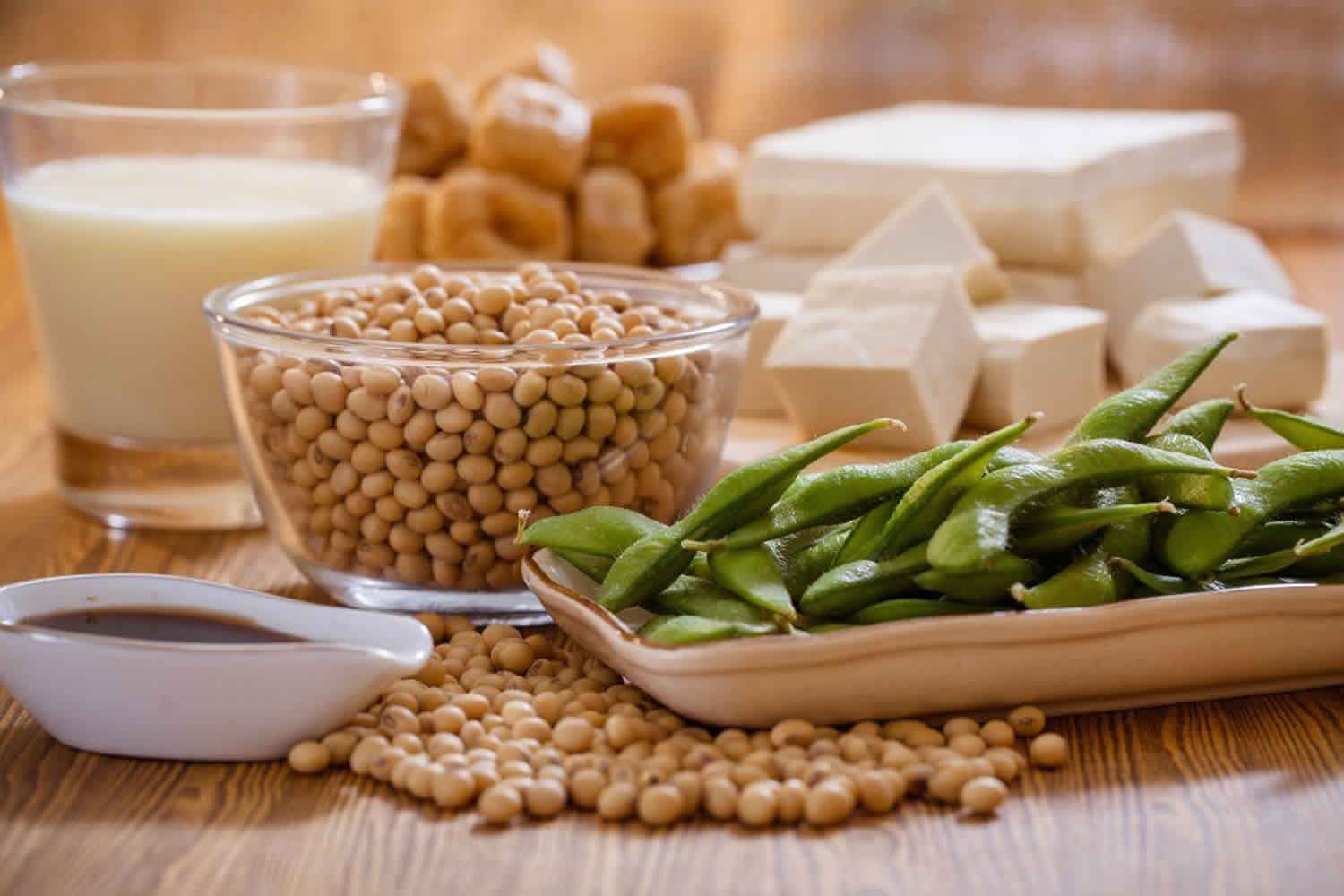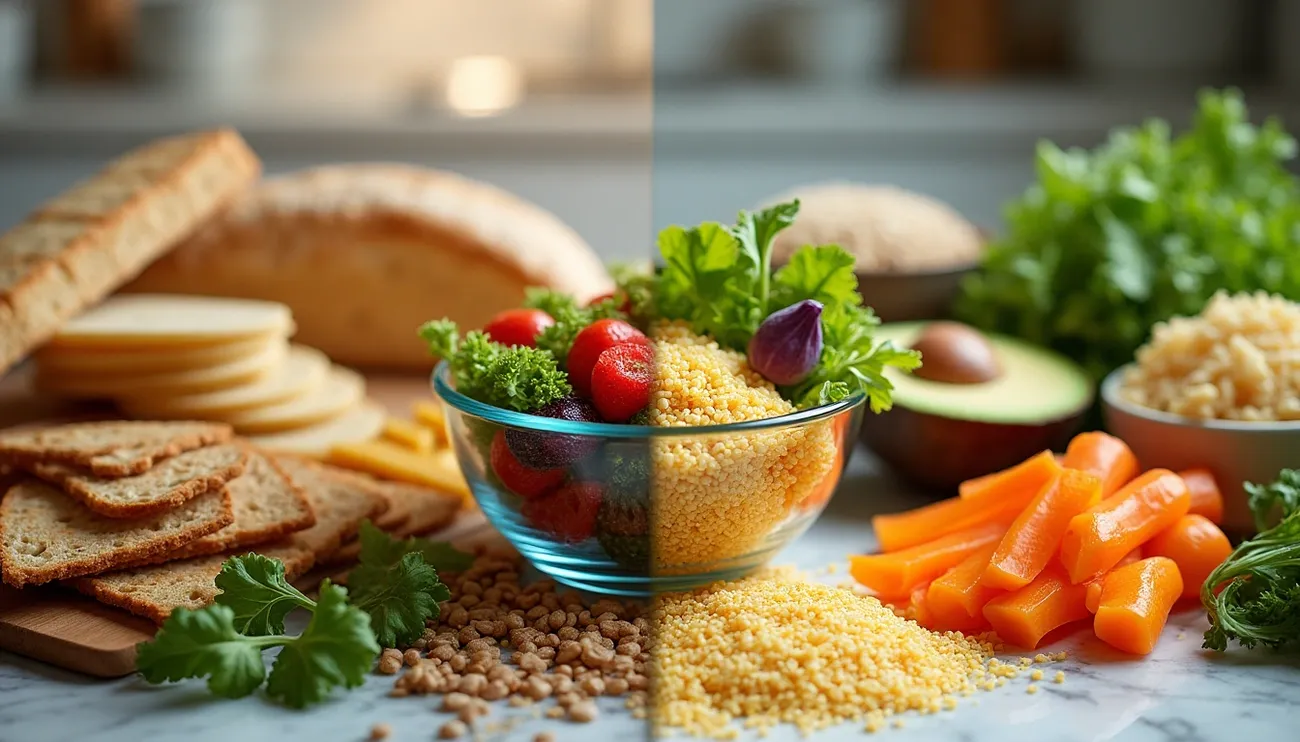Are you curious about the pescatarian diet and its health and environmental benefits? You’re in the right place! This guide explores fish-based eating, its origins, and key principles. It also highlights the many advantages it offers. Get ready for a delicious and sustainable food journey that could change how you eat. Key Takeaways Discover the fundamental aspects of the pescatarian diet and how it differs from other dietary approaches. Explore the health benefits associated with a pescatarian lifestyle, from heart health to weight management. Learn about the essential foods to include in your pescatarian diet plan, from diverse seafood options to plant-based staples. Understand the importance of sustainable seafood choices and how to navigate mercury levels. Uncover practical tips for meal planning, recipe inspiration, and overcoming common challenges as a pescatarian. What Is a Pescatarian Diet: Understanding the Basics Let’s dive into the world of pescetarianism. It’s a diet that includes seafood and plants. Unlike vegans or vegetarians, pescatarians eat fish and shellfish too. This makes it a great choice for those looking for a balanced diet. Origins and Evolution of Pescetarianism The pescatarian diet comes from the Mediterranean and Japanese cuisines. Fish and seafood have always been big parts of these diets. Now, it’s popular with people who want to eat well and be kind to the planet. Key Principles of Fish-Based Eating Focus on fish and seafood that’s good for the planet Eat lots of fruits, veggies, whole grains, legumes, and healthy fats Don’t eat red meat, poultry, or other animal products (except fish and seafood) Choose seafood that’s low in mercury and good for the environment Difference Between Pescatarian and Other Diets Pescatarians eat fish and seafood, unlike vegetarians and vegans. This gives them more nutrients like omega-3s and vitamins. It also means they can try more foods, making their diet more interesting. Diet Protein Sources Sustainability Pescatarian Fish, seafood, plant-based foods Emphasis on sustainable seafood choices Vegetarian Plant-based foods, dairy, eggs Avoids animal-based products Vegan Plant-based foods only Avoids all animal-based products Learning about pescetarianism opens up a world of healthy, tasty eating. Whether you’re new to it or already a fan, it’s a journey filled with flavor and health benefits. Health Benefits of Following a Pescatarian Diet Are you curious about the health benefits of a pescatarian diet? Let’s dive into how seafood and plant-based foods can boost your health. We’ll look at heart health, brain function, and more. Discover how this diet can make you feel great! A pescatarian diet is rich in omega-3 fatty acids. These nutrients, found in fish like salmon, tuna, and mackerel, are key for a healthy heart. Studies show they lower heart disease risk, blood pressure, and improve cholesterol. This diet also supports brain health and cognitive function. Omega-3s in seafood improve memory, concentration, and brain health. It’s a great choice for those who want to nourish their mind and body. The pescatarian diet is also a sustainable protein source. It’s better for the environment than traditional meat production. This aligns with the trend towards eco-friendly food choices. “Switching to a pescatarian diet has been one of the best decisions I’ve made for my health. I feel more energized, my digestion has improved, and I know I’m making a positive impact on the planet.” – Sarah, Pescatarian Enthusiast Looking to improve heart health, brain function, or support sustainability? The pescatarian diet might be right for you. It combines seafood and plant-based foods for a healthier lifestyle. Health Benefits of Pescatarian Diet Nutritional Highlights Improved heart health Enhanced brain function Sustainable protein source Omega-3 fatty acids High-quality plant-based proteins Diverse array of vitamins and minerals Essential Foods in a Fish-Based Diet Plan Starting a pescatarian diet means eating lots of fish and seafood, plus plenty of plant-based foods. This mix is key to a balanced, vegetarian seafood diet or plant-based seafood diet. Types of Fish and Seafood to Include Fish options are endless. Some top picks for pescatarians include: Salmon, rich in omega-3 fatty acids Tuna, a versatile and protein-packed option Shrimp, a low-calorie source of lean protein Sardines, brimming with essential vitamins and minerals Tilapia, a mild-flavored and budget-friendly fish Plant-Based Components Adding plant-based foods is crucial. Make sure to include: Leafy greens like spinach and kale Legumes such as lentils and chickpeas Whole grains like quinoa and brown rice Nuts and seeds for added crunch and healthy fats Colorful fruits and vegetables for a vitamin and mineral boost Recommended Portion Sizes For a balanced diet, watch your portion sizes. Here’s a simple guide: Aim for 3-4 ounces of cooked fish or seafood per serving Fill half your plate with a variety of plant-based foods Complement your meal with whole grains and healthy fats By eating these foods and keeping portion sizes in check, you’ll enjoy a healthy, pescatarian-friendly lifestyle. Navigating Mercury Levels and Sustainable Seafood Choices We love fish and seafood, but we also care about our health and the planet. That’s why knowing about mercury levels in seafood and choosing ethical seafood is key for us. Some fish have high mercury levels, but we can make smart choices. Salmon, sardines, and tilapia are safer. They offer great nutrition without the mercury risk. Choosing sustainable seafood is also vital for us. We want to protect the oceans and marine life for the future. We look for seafood that’s certified as sustainable. This ensures the fish is caught or farmed responsibly. Opt for wild-caught fish from well-managed fisheries whenever possible. Choose farmed fish that are raised in environmentally responsible aquaculture systems. Avoid overfished species and those with high levels of bycatch. By choosing wisely about mercury levels in seafood and sustainable seafood, we benefit our health and the planet. It’s a win-win for us and the oceans we love. Nutritional Considerations and Omega-3 Benefits The pescatarian diet focuses on the nutrients in fish and seafood. These are key sources of essential nutrients that boost our health. Let’s look at the main benefits. Essential Nutrients in Fish Omega-3 fatty
Natural Sugar Alternatives: Best Options for Health
Do you love sweet treats but worry about their health effects? You’re not alone. The search for natural sugar alternatives is on the rise. This is because of growing concerns about diabetes and obesity. But don’t worry, we’re about to find the best natural sweeteners. They’ll make your desserts delicious without harming your health. Want to enjoy your favorite sweets without feeling guilty? It’s possible. We’ll look at plant-based sweeteners that are tasty and good for you. They’re packed with nutrients and health benefits. Key Takeaways Discover a variety of natural sugar alternatives that are better for your health Learn about the health risks of excessive sugar consumption and the growing need for healthier options Explore the unique properties and benefits of popular plant-based sweeteners like stevia, monk fruit, and yacon syrup Understand the importance of glycemic index and its impact on blood sugar levels Discover how to incorporate natural sweeteners into your baking and cooking for delicious, guilt-free treats Understanding the Need for Sugar Alternatives In today’s fast world, sugar is everywhere. It’s in sweet drinks and processed snacks. But too much sugar can harm our health in big ways. Health Risks of Excessive Sugar Consumption Too much sugar can cause weight gain, diabetes, heart disease, and even cancer. Low-calorie sweeteners and sugar substitutes are better choices. They let us enjoy sweet tastes without the health risks. Rising Diabetes and Obesity Concerns Diabetes and obesity are becoming more common. Many people are affected. The need for zero-calorie sweeteners and healthier options is urgent. The Growing Demand for Healthier Options More people want natural, low-calorie sugar alternatives. They’re looking for sugar substitutes that are good for them. This shows how much we value our health. “The rise in diabetes and obesity rates has sparked a growing interest in finding healthier, low-calorie sweeteners that can replace traditional sugar in our diets.” The need for sugar alternatives is clear. We’ll look into natural and low-calorie sweeteners. They can change how we enjoy our favorite treats. Popular Natural Sweeteners from Plants Nature has amazing options for those who want to satisfy their sweet tooth without harming their health. Let’s explore three plant-based natural sweeteners: stevia, monk fruit, and yacon syrup. They’re making waves in the wellness world. Stevia and Its Benefits Stevia is a zero-calorie sweetener made from Stevia rebaudiana leaves. It’s different from artificial sweeteners because it’s calorie-free and has health perks. It helps keep blood sugar levels healthy, which is great for those with diabetes. Stevia is also packed with antioxidants. These help protect the body from harmful free radicals. Monk Fruit Extract Properties Monk fruit extract is a sweetener from the monk fruit, or luo han guo. It’s incredibly sweet, up to 200 times sweeter than sugar, but has no calories or carbs. It’s known for boosting the immune system and helping with weight management. Yacon Syrup Benefits Yacon syrup comes from the yacon plant’s roots, a sunflower relative. It’s a sweet, thick liquid with a low glycemic index. This makes it perfect for keeping blood sugar levels stable. Yacon syrup is also full of fructooligosaccharides (FOS), a fiber that’s good for the gut and bowel health. Looking for a sweetener that’s good for diabetes, your gut, or just your sweet tooth? These plant-based natural sweeteners are worth trying. Stay tuned for more on natural sugar alternatives and their benefits! Sugar Alternatives: Complete Guide to Zero-Calorie Options Want to cut down on sugar but still enjoy sweet treats? We’ve got you covered! We’re exploring zero-calorie sweeteners, also known as non-nutritive or artificial sweeteners. These options are great for those watching their weight or managing health issues like diabetes. We’ll look at different types, their benefits and drawbacks. You’ll learn how to enjoy your favorite foods without the guilt! Natural Zero-Calorie Sweeteners First, let’s talk about plant-based wonders. These natural sweeteners offer a sweet fix without the calories. Here are some popular ones: Stevia – This sweetener, from the stevia plant, is up to 300 times sweeter than sugar. It’s perfect for baking and drinks. Monk Fruit Extract – Known as “lo han guo,” this sweetener is zero-calorie and has antioxidants. Erythritol – A sugar alcohol found in fruits and fermented foods, it barely affects blood sugar. Artificial Zero-Calorie Sweeteners There are also artificial sweeteners available. Here are some common ones: Aspartame – Used in diet sodas, gum, and low-calorie foods, it’s one of the most common. Saccharin – Discovered over a century ago, it’s 300 times sweeter than sugar and used in many low-calorie products. Sucralose – Made from sugar, it’s a zero-calorie sweetener used in baked goods, drinks, and some medications. Sweetener Calorie Content Pros Cons Stevia 0 calories Natural, no impact on blood sugar May have a bitter aftertaste for some Monk Fruit Extract 0 calories Natural, antioxidant properties Can be more expensive than other options Aspartame 0 calories Widely available, no impact on blood sugar Potential concerns about safety for some individuals Choosing between natural and artificial sweeteners is a personal decision. Always talk to your healthcare provider, especially if you have health conditions. They can help find the best sweetener for you. Honey and Maple Syrup as Natural Substitutes Raw honey and pure maple syrup are nature’s sweetest gifts. They taste great and are full of nutrients. These golden wonders can boost your health and wellbeing. Nutritional Benefits of Raw Honey Raw honey is a superfood, full of essential nutrients and antioxidants. It keeps its natural enzymes, vitamins, and minerals, unlike processed honey. It’s known for its antibacterial properties and can soothe sore throats and improve gut health. Pure Maple Syrup Properties Maple syrup comes from maple tree sap. It’s a pure maple syrup option for those avoiding refined sugars. It’s rich in minerals like manganese, zinc, and calcium. Plus, it has a low glycemic index, good for blood sugar control. Nutrient Raw Honey Pure Maple Syrup Carbohydrates 17g per tablespoon 52g per 1/4 cup Calories 64 per tablespoon 206 per 1/4 cup Vitamins and
Sugar-Free Diet: A Complete Guide to Healthy Living
Ever thought a sugar-free diet could change your health? Let’s explore the secrets of this new way of eating. We’ll look at the science, benefits, and how to start a sugar-free life. This will help you achieve vibrant, lasting health. Key Takeaways Discover the profound impact of sugar on your overall health and wellness Learn why people are choosing to eliminate sugar from their diets Understand the science-backed benefits of a sugar-free diet Gain practical tips for transitioning to a sugar-free lifestyle Explore natural sugar substitutes and alternatives to satisfy your sweet cravings Discover how to manage sugar withdrawal and overcome common challenges Uncover the power of technology to simplify your sugar-free journey Ready to start a journey to a healthier, sugar-free you? Let’s dive in and find out how this diet can change your life! Understanding the Sugar-Free Diet Revolution In recent years, the sugar-free diet has become very popular. People want to improve their health and wellbeing. Let’s explore the science behind sugar’s impact and why more people are choosing this lifestyle. We’ll also clear up some common misconceptions about sugar-free living. The Science Behind Sugar’s Impact on Health Too much sugar can lead to weight gain, type 2 diabetes, and heart disease. Our bodies have trouble managing blood sugar levels when we eat too much sugar. This can cause insulin resistance and metabolic problems. Cutting out added sugars can improve our health and energy. Why People Choose Sugar-Free Living Improved weight management and reduced risk of obesity Better blood sugar control and reduced risk of type 2 diabetes Increased energy and mental clarity Reduced inflammation and improved overall well-being Common Misconceptions About Going Sugar-Free Many think a sugar-free diet means giving up flavor and eating bland foods. But this isn’t true. With the right recipes and ingredients, a sugar-free diet can be delicious and fulfilling. It’s key to know that natural sugars in fruits and whole grains are different from added sugars in processed foods. “A sugar-free diet isn’t about depriving yourself – it’s about nourishing your body with whole, natural foods that fuel your health and wellbeing.” Understanding sugar’s impact and the benefits of a sugar-free lifestyle can lead to a healthier future. Are you ready to join the sugar-free revolution? Health Benefits of Eliminating Sugar from Your Diet Starting a sugar-free lifestyle can bring many health benefits. Cutting out added sugars helps with diabetes management and weight loss. It also boosts your overall health. One big plus of a sugar-free diet is how it helps control blood sugar. Eating less refined carbs and added sugars stabilizes blood glucose. This makes managing type 2 diabetes easier, leading to more energy, better mood, and fewer health risks. Also, a sugar-free diet aids in weight loss. It removes empty calories from sugary foods and drinks. This helps you eat fewer calories and manage your weight better. Plus, you’ll have less insulin spikes and sugar cravings, making it easier to eat healthy. Improved blood sugar regulation and diabetes management Increased energy levels and enhanced mood Sustainable weight loss and management Reduced risk of chronic diseases Healthier skin and reduced inflammation Removing sugar also improves your overall health. A sugar-free diet lowers the risk of heart disease, some cancers, and Alzheimer’s. It also makes your skin healthier by reducing inflammation and improving its barrier function. “Eliminating sugar from my diet has been a game-changer for my health. I’ve experienced more stable energy levels, clearer skin, and better management of my diabetes. It’s a simple change that has made a profound difference in my life.” Choosing a sugar-free diet is a big step towards better health. By avoiding added sugars, you get many benefits. These benefits improve your daily life and long-term health. Getting Started with a Sugar-Free Diet Ready to start your sugar-free journey? We’ve got everything you need! First, let’s get your kitchen ready for success. A few simple changes can help you easily switch to a healthier lifestyle. Preparing Your Kitchen for Success Begin by getting rid of sugary snacks, sodas, and processed foods. Replace them with sugar-free alternatives like fresh fruits, veggies, nuts, and healthy proteins. Having these options ready will make it easier to follow your sugar-free diet. Essential Shopping List Fresh produce (berries, leafy greens, vegetables) Lean proteins (chicken, fish, eggs) Healthy fats (avocados, olive oil, nuts, seeds) Whole grains (quinoa, brown rice, oats) Sugar-free sweeteners (stevia, erythritol, monk fruit) Herbs and spices for flavorful, sugar-free cooking Reading Food Labels Like a Pro Learning to read food labels is key for a sugar-free diet. Choose products with little added sugar and natural ingredients. Stay away from high-fructose corn syrup, sucrose, and other hidden sugars. With your kitchen ready and your label-reading skills improved, you’re set for a successful sugar-free diet. Adopt these healthy habits and you’ll soon feel full of energy and confidence! Natural Sugar Substitutes and Alternatives Goodbye to sugar, hello to sweetness! Exploring natural sugar substitutes can change your sugar-free life. These healthier options let you enjoy sweet treats without harming your health. Honey is a great choice. It’s full of antioxidants and has a lower sugar level than regular sugar. It’s perfect for baking and drinks. Maple syrup is another good pick. It tastes different and is full of vitamins and minerals. If you want something with no calories, try stevia or monk fruit. These plant-based sweeteners don’t raise blood sugar levels. They’re great for keeping an eye on your glycemic index. Substituting natural sweeteners for sugar is a great way to enjoy the flavors you love while supporting your health goals. But, be careful with artificial sweeteners. They might not be as healthy as they seem. They can mess with your metabolism and even make you want more sugar. Natural Sugar Substitute Glycemic Index Calorie Count Honey 58 64 calories per tablespoon Maple Syrup 54 52 calories per tablespoon Stevia 0 0 calories per teaspoon Monk Fruit 0 0 calories per teaspoon Try different natural sugar substitutes to find what
Managing Soy Allergies just got easier with Food Scan Genius
Understanding Soy Allergy: A Comprehensive Guide to Managing Your Diet Introduction Soy allergy is a condition characterized by an abnormal response of the body to the proteins found in soy. As a legume, soybeans belong to the same family as navy, kidney, string, black and pinto beans, chickpeas, lentils, carob, licorice, and peanuts. Individuals with soy allergies may also exhibit sensitivity to other legumes. To effectively manage a soy allergy, it is crucial to identify and avoid all foods and products containing soy or soy-based ingredients. This guide presents general guidelines for maintaining an allergy-free diet, provides a list of allowed and not allowed foods, and offers tips on how to read labels for a soy-free diet. Understanding Food Allergen Labeling The Food Allergen Labeling and Consumer Protection Act of 2004 ensures that U.S. manufacturers clearly state on the label if a packaged food item contains soy or soy-based ingredients. This labeling requirement assists individuals with soy allergies in making informed choices about the food they consume. However, it is important to note that soy oil, commonly used in cooking, does not typically contain soy protein, which causes allergic reactions. Nevertheless, those with soy allergies should consult their doctors before consuming products containing soy oil or processed with soy oil. Breads and Starches When it comes to breads and starches, it is generally safe to consume those that do not contain soy ingredients. However, caution should be exercised with regard to potato chips or popcorn cooked in soy oil. While most soy oil does not contain soy protein, individuals with soy allergies should consult their doctors for guidance. Allowed Not Allowed Plain macaroni, rice, barley, rye, wheat, oats, or grits Breads, crackers, cakes, rolls, or pastries containing peanuts, peanut oil, soy flour Breads & baked goods not containing soy ingredients Processed and “natural” cereals that contain soy ingredients Soy pasta Vegetables Fresh, frozen, or canned vegetables without sauces or breading containing soy ingredients are generally safe for individuals with soy allergies. However, caution should be exercised with soybeans and soybean sprouts, as they may trigger allergic reactions. Fruit All fresh, frozen, or canned fruits and juices processed without soy products are suitable for individuals with soy allergies. However, fruit drink mixes, sauces, or toppings for fruit that contain soy ingredients should be avoided. Beverages When selecting beverages, it is generally safe to consume soft drinks, tea, coffee, and fruit juice. However, soy-based formulas, coffee substitutes with soy, instant coffee, hot cocoa mixes, malt beverages, and fruit drink mixes made with soy ingredients should be avoided. Meat and Meat Substitutes Fresh or frozen beef, chicken, lamb, pork, turkey, veal, or fish served without prepackaged sauces, breading, or gravy are safe for those with soy allergies. However, caution should be exercised with pork link sausage, deli/luncheon meats made with soy, and commercially prepared meats where soy is used as a meat extender. Additionally, meat or cheese substitutes that contain soy, such as tofu/bean curd, natto, miso, and textured vegetable protein (TVP), should be avoided. Milk and Milk Products Milk, cheese, cottage cheese, and yogurt without soy products are allowed for individuals with soy allergies. However, milk drinks or milk substitutes that contain soy should be avoided. Soups and Combination Foods Homemade soups and commercial soups that do not contain soybeans are generally safe for individuals with soy allergies. However, it is important to note that soy is used in many canned soups, commercial entrees, and combination foods. Therefore, it is crucial to read labels carefully before consuming these products. Desserts and Sweets Ice cream, gelatin, and cookies made without soy ingredients are safe for individuals with soy allergies. However, baked goods such as cakes or cookies that contain soy flour should be avoided. It is worth noting that some commercial ice creams and other frozen desserts may contain soy products. Therefore, it is essential to check the ingredients list before consuming these products. Additionally, hard candies, nut candies, fudge, and caramels made with soy flour should be avoided. Fats and Oils Butter, margarines, and shortening are generally safe for individuals with soy allergies. However, caution should be exercised with margarine and butter substitutes. Some salad dressings, mayonnaise, sauces, or gravies may contain soy products. Roasted soybeans or “soy nuts” should also be avoided. Condiments and Miscellaneous Sugar, honey, molasses, catsup, mustard, jelly, jam, plain sugar candies, syrup, and pickles are generally safe for individuals with soy allergies. However, caution should be exercised with commercial vegetarian products, meat substitutes, some Worcestershire and other sauces, fermented soybean pastes (miso and natto), soy sauce, tamari sauce, granola, breakfast bars made with soy, and imitation bacon bits made with soy. How to Read Labels for a Soy-Free Diet Reading labels is crucial for individuals with soy allergies to avoid consuming products that contain soy or soy-based ingredients. It is essential to be aware of different names and forms in which soy may be present to make informed choices. Here are some ingredients and terms to watch out for: Hydrolyzed soy protein Miso Edamame Natto Soy albumin Soy cheese Soy fiber Soy yogurt Soy ice cream Soy bean (curd, granules) Shoyo sauce Soy flour Soy grits Soy nuts Soy milk Soy sprouts Soy protein concentrate Soy protein isolate Soy protein hydrolyzed Soy sauce Tamari Tempeh Textured vegetable protein (TVP) Tofu It is also important to be aware of other possible sources of soy or soy products, such as Asian cuisine, flavorings, hydrolyzed plant protein, hydrolyzed vegetable protein, natural flavoring, vegetable broth, vegetable gum, vegetable starch, and vitamin E containing soybean oil. To ensure a soy-free diet, it is advisable to contact manufacturers to identify the natural flavorings, vegetable broths, gums, and starches used in their products, as these have the potential to contain soy. Conclusion Managing a soy allergy requires vigilance and careful attention to food choices. By following the general guidelines provided in this article and reading labels diligently, individuals with soy allergies can maintain an allergy-free diet. It is always advisable to consult healthcare
Emerging Culprits in the World of Food Allergies
Emerging Culprits in the World of Food Allergies As our understanding of food allergies deepens, so does our awareness of emerging allergens that may catch us by surprise. In this blog post, we will explore some of the lesser-known culprits that are gaining recognition for causing allergic reactions. Join us on this journey into the world of emerging allergens and discover the challenges they pose for individuals striving to maintain a safe and allergy-free diet. 1. Sesame: A Rising Star In recent years, sesame has emerged as a notable allergen, prompting discussions about its inclusion in mandatory allergen labeling. Sesame allergies can manifest with a range of symptoms, from mild skin reactions to severe respiratory distress. As awareness grows, the food industry is adapting to accommodate individuals with sesame allergies. 2. Mustard: A Spicy Surprise Mustard, a common condiment and spice, is gaining recognition as an allergen. Those with mustard allergies may experience symptoms ranging from mild skin irritation to more severe reactions. As mustard finds its way into various processed foods and restaurant dishes, individuals with this emerging allergy face the challenge of meticulous ingredient scrutiny. 3. Lupin: From Flour to Snacks Lupin, a legume belonging to the pea family, is increasingly used in gluten-free flours and snacks. However, it has also emerged as an allergen, with reactions ranging from skin rashes to anaphylaxis. The growing popularity of lupin-containing products necessitates heightened awareness among consumers and food manufacturers alike. 4. Buckwheat: A Pseudo-Grain Allergen While buckwheat is often considered a safe alternative for those with wheat allergies, it has emerged as an allergen in its own right. Buckwheat allergies can trigger a range of symptoms, including digestive issues and skin reactions. The inclusion of buckwheat in gluten-free products adds complexity to allergen management for individuals with this emerging sensitivity. 5. Fruits and Vegetables: Natural, Yet Allergenic Some fruits and vegetables, typically considered healthy and allergen-free, can pose challenges for certain individuals. For example, allergies to kiwi, avocado, and stone fruits have gained attention. Managing allergies to these seemingly innocuous foods requires heightened awareness and, in some cases, medical guidance. 6. Meat Allergies: An Unusual Phenomenon While relatively rare, allergies to red meat, particularly triggered by the bite of the lone star tick, have been identified. Individuals with this allergy may experience delayed reactions, making it challenging to link symptoms to a specific food. As cases increase, medical professionals are gaining insights into this unique form of meat allergy. Conclusion As we unravel the mysteries of emerging allergens, it becomes evident that food allergies are dynamic and ever-evolving. The journey toward allergen awareness involves not only understanding established culprits but also staying informed about new threats on the horizon. For individuals with allergies, this means adopting a proactive approach, leveraging tools like allergen detection apps, and maintaining open communication with healthcare professionals. As we navigate this evolving landscape, the collective effort to raise awareness and adapt food practices will ensure a safer and more inclusive dining experience for all. Food Scan Genius: For Consumers with Food Allergies Fortunately, modern technology is offering a helping hand to those navigating the challenges of food allergies. Tools like Food Scan Genius: empower consumers to make informed choices. By scanning product barcodes, Food Scan Genius: provides instant allergen information, allowing individuals to shop with confidence. This innovative solution is a game-changer, providing a sense of control and security in a world where food labels can be intricate puzzles. Check out Food Scan Genius at https://www.scangeni.us and download our app at https://app.scangeni.us
Common Culprits: The most prevalent food allergens are often referred to as the “Big 8”
Common Culprits: The most prevalent food allergens Food allergies affect millions of individuals worldwide, casting a shadow of caution over seemingly innocent meals. The “Big 8” food allergens have earned their notorious reputation, being responsible for the majority of allergic reactions. In this blog post, we’ll take a closer look at these common culprits, shedding light on what makes them prevalent and the challenges they pose for those with allergies. 1. Milk: The Fundamental Allergen Milk, a staple in many diets, is a leading cause of allergic reactions. The culprit is often a protein called casein. For those affected, even small traces of milk can trigger symptoms ranging from hives to more severe reactions like anaphylaxis. 2. Eggs: Beyond Breakfast Eggs, a breakfast favorite, contain proteins that can provoke allergic responses. While egg allergies are more common in children, some individuals carry this sensitivity into adulthood. The challenge lies not only in avoiding eggs themselves but also in navigating various baked goods and processed foods where eggs are prevalent. 3. Peanuts: A Tiny Nut with Big Impact Despite their name, peanuts are legumes, not true nuts. The proteins in peanuts are potent allergens, often causing severe reactions. Peanut allergies are notorious for their persistence into adulthood and the need for strict avoidance due to the potential for life-threatening reactions. 4. Tree Nuts: A Diverse Challenge Tree nuts, including almonds, walnuts, and cashews, pose a diverse challenge for those with allergies. The proteins in tree nuts can vary widely, making it essential for individuals to identify specific nuts triggering their allergic reactions. 5. Soy: A Hidden Component Soy allergies often go beyond avoiding soybeans alone. Soy is a versatile ingredient found in various forms, including soy protein and soy lecithin, making it a challenging allergen to avoid completely. Individuals with soy allergies need to scrutinize ingredient lists diligently. 6. Wheat: More Than Just Gluten Wheat allergies extend beyond gluten sensitivity. While celiac disease involves an immune response to gluten, wheat allergies can trigger reactions to proteins like albumin and globulin. Navigating the world of gluten-free options becomes crucial for those with wheat allergies. 7. Fish: The Oceanic Allergen Fish allergies can be particularly troublesome, as they encompass a wide variety of species. Individuals with fish allergies need to be vigilant about avoiding specific types of fish, and cross-contamination is a constant concern, especially in restaurants. 8. Shellfish: From Crustaceans to Mollusks Shellfish allergies encompass both crustaceans (shrimp, crab, lobster) and mollusks (clams, mussels, oysters). The diverse nature of shellfish makes it imperative for individuals with these allergies to be aware of the specific type triggering their reactions. Conclusion Understanding the Big 8 food allergens is not just a matter of awareness but a crucial aspect of daily life for millions. For those affected, diligent label reading, open communication with restaurant staff, and continuous education about emerging allergens are vital. As the culinary world evolves, so too must our understanding of these common allergens, ensuring that everyone can savor the joy of food without fear. Food Scan Genius: For Consumers with Food Allergies Fortunately, modern technology is offering a helping hand to those navigating the challenges of food allergies. Tools like Food Scan Genius: empower consumers to make informed choices. By scanning product barcodes, Food Scan Genius: provides instant allergen information, allowing individuals to shop with confidence. This innovative solution is a game-changer, providing a sense of control and security in a world where food labels can be intricate puzzles. Check out Food Scan Genius at https://www.scangeni.us
Navigating Shellfish Allergies while Shopping: A Comprehensive Guide
For individuals with shellfish allergies, the simple act of choosing what to eat can be a potential minefield. The consequences of accidental consumption of shellfish can range from mild discomfort to severe, life-threatening reactions. In this blog post, we’ll explore the impact of unintentional shellfish consumption, common symptoms of shellfish allergies, and most importantly, how the Food Scan Genius App (www.scangeni.us) can empower individuals to make informed choices while shopping for food. The Hidden Hazards of Shellfish Allergies: Shellfish allergies are prevalent, affecting both adults and children. Even a small amount of shellfish or shellfish-derived ingredients can trigger an allergic reaction in susceptible individuals. The challenge lies not only in avoiding obvious sources of shellfish but also in identifying hidden shellfish components in various dishes and processed foods. Shellfish allergy is an immune response to proteins found in certain marine animals, such as crustaceans and mollusks. Symptoms of shellfish allergy include hives, itching, swelling of the lips, face, tongue, and throat, difficulty breathing, wheezing, abdominal pain, diarrhea, vomiting, tingling mouth, and anaphylaxis1. If you suspect that you have a shellfish allergy, it is important to seek medical attention immediately1. Diagnosis is done by allergy testing, which includes a physical examination, skin prick test, and blood test2. The only sure way to prevent an allergic reaction to shellfish is to avoid shellfish. If you have a severe allergic reaction to shellfish, you’ll likely need an emergency injection of epinephrine (adrenaline)23. If you’re at risk of anaphylaxis to shellfish, your health care provider can give you a prescription in advance and explain how and when to give the injection2. Common Symptoms of Shellfish Allergies: Digestive Distress: Abdominal pain, bloating, and diarrhea are common digestive symptoms. Nausea and vomiting may also occur. Skin Reactions: Hives, eczema, or general itching can manifest on the skin. Swelling, particularly around the face, lips, and tongue, may occur. Respiratory Issues: Wheezing, coughing, or shortness of breath may be experienced. Severe cases can lead to anaphylaxis, a life-threatening reaction that requires immediate medical attention. Cardiovascular Symptoms: A drop in blood pressure, leading to dizziness or fainting. Rapid or irregular heartbeat. The Mental Toll:Living with a shellfish allergy extends beyond the physical symptoms. The constant fear of accidental shellfish exposure can take a toll on mental health. Social situations involving food become potential stressors, and anxiety levels may rise, affecting overall well-being. Dealing with Accidental Shellfish Exposure: Administer Epinephrine: Individuals with known shellfish allergies should carry an epinephrine auto-injector at all times. Administer the epinephrine shot immediately upon suspecting an allergic reaction. Seek Emergency Medical Attention: Even if symptoms improve after using the epinephrine, seek immediate medical help. Allergic reactions can have a delayed onset or return after the initial treatment. Inform Others: If in a social setting, inform those around you about the situation and the need for urgent medical attention. Ensure someone stays with you until medical professionals arrive. Food Scan Genius App: Empowering Choices: Technology has become a vital ally for individuals managing food allergies. The Food Scan Genius App, available at www.scangeni.us, is a powerful tool designed to empower those with shellfish allergies in their daily lives. Barcode Scanning: The app allows users to scan the barcodes of food products, providing instant information about potential shellfish or shellfish-derived ingredients. This feature helps users make informed choices while shopping for groceries, minimizing the risk of accidental exposure. Product Database: The app maintains an extensive database of food products, continually updated to reflect the latest ingredient information. Users can search for specific products or browse categories to find suitable, shellfish-free options. Allergen Alerts: Food Scan Genius sends alerts to users if a scanned product contains shellfish or shellfish-related ingredients. This real-time information ensures that users are aware of potential risks before making a purchase. User-Friendly Interface: The app is designed with a user-friendly interface, making it accessible to individuals of all ages. Features like personalized profiles and shopping lists enhance the overall user experience. Conclusion: Living with a shellfish allergy requires constant awareness, but with the right tools, individuals can regain control over their dietary choices. The Food Scan Genius App is not just a technological innovation; it’s a lifeline for those navigating the complex world of food ingredients. By leveraging technology, individuals with shellfish allergies can confidently shop for groceries, knowing they have the means to make informed decisions about the foods they consume. Download the Food Scan Genius app at https://app.scangeni.us and take the first step toward a safer and more enjoyable life with a shellfish allergy. Empower yourself, stay informed, and let technology be your ally on the journey to managing shellfish allergies effectively. Check out Food Scan Genius at https://www.scangeni.us and download our app at https://app.scangeni.us

